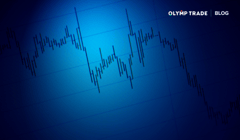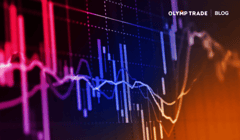
In the process of choosing stocks, every investor faces the question of what exactly they should pay attention to when buying stocks. Which financial indicators should investors focus on during their research? A financial indicator is a specific ratio that helps determine whether investing in a company is safe and profitable.
Contents:
Interact with the underlined words and green dots to get additional details and explanations.
Additional context for the visuals.
Explanations and definitions of terms.
Debt Ratio
It is pretty difficult to find a perfect company where all financial indicators will be optimal, and the price will meet investors' expectations. Therefore, it is essential to use appropriate ratios when compiling a portfolio.
A good rule when choosing a company to invest in is to look at three key fundamental analysis ratios: debt ratio, ROE, and P/E. Let's explore and explain each one in order. In this first part of our series on ratios, we cover debt ratios. The two other important ratios are discussed in Part 2.
Nobody wants to buy a company that won’t be able to pay for its debts soon. Use the debt ratio to avoid buying such stocks.
The debt ratio is the amount of a company's total liabilities divided by all of its assets. This fairly simple metric allows you to assess how risky it is to invest in a company. Let's look at how it works.
Let's say we have Person A and Person B.
Person A has a loan of $3 million and assets worth $1.5 million in cars and apartments worth $5 million. In terms of Person A's balance sheet, their total debt is $3 million and the total value of assets is $6.5 million in cars and apartments. This means Person A's debt ratio is 3/6.5 = 46%. In other words, the share of Person A's debt to assets is 46%.
Person B decided to go all out and took $10 million in loans. Person B doesn't have a car, but he does have several apartments worth $7 million in total. Person B's debt ratio in this case is 142.8% (10M/7M).
Now, let's imagine a terrible thing happened, and A and B lost their jobs. In order to repay a debt of $3 million, Person A will need to sell an apartment. But the cars and part of the money from the sale of the apartment will still remain with Person A. As for Person B, he is in very bad shape. Even having sold the apartments and left with no assets at all, he will be unable to repay the debt fully and will be forced to look for other ways out of the situation.
FAANG Debt Ratio Analysis
When we analyze a company's balance sheet, our analysis is basically the same as the analysis of Person A and Person B’s history. If a company has a high debt ratio, then this means that the risk of investing in shares of such a company increases significantly. However, the question then arises as to what is considered a high or low coefficient?
It depends a lot on the industry. The highest debt ratio is in the banking sector. It may be close to 100%, but at the same time, the bank will function quite normally without experiencing problems. In all other sectors, a debt ratio above 80% may already indicate increased risks, and investing in such companies is fraught with unpleasant consequences. Look at the debt ratios of companies in the FAANG sector:
| Company | Debt Ratio |
|---|---|
| Meta (Facebook) | 24.70% |
| Apple | 82% |
| Amazon | 67.10% |
| Netflix | 64.40% |
| 29.90% |
You can see that Apple has the highest debt ratio. The safest company in terms of debt is Meta.
You can calculate the debt ratio yourself. To do this, you need to get the company's balance sheet, find the total liabilities and divide by total assets.
In our opinion, the debt ratio is more interesting than leverage ratios, which are calculated as the ratio of a company's debt to equity.
Unfortunately, the debt ratio is insufficient to decide on buying or selling stocks. Take a look at Part 2 of our Financial Ratios articles where we discuss two other important market value ratios that can be used to trade better. Meanwhile, practice trading on Olymp Trade stocks.
Trade Stocks










